Hidden Treasures of the South West Coast Path

The South West Coast Path is one of the world's best loved walks, stretching for 630 miles from Somerset and North Devon through Cornwall and Dorset. It is England's longest national walking trail, and boasts some of the most dramatic scenery in the British Isles.
The Path was originally created by coastguards, looking out for smugglers. For centuries, it has been used by fishermen looking for fish shoals and checking sea conditions.
Along its route there are many 'hidden places' which can be overlooked by the thousands of walkers who walk the route every year. We go in search of 12 hidden treasures on the South West Coastal Path.
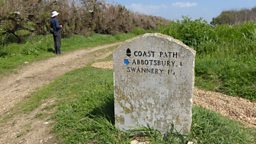
1. Hawker's Hut – Remote Retreat
One of the most unusual buildings along the South West Coast Path is Hawker’s Hut which was built from timbers retrieved from shipwrecks by the eccentric clergyman, Reverend Robert Hawker in the 1800s.
Hawker was a larger than life character who was the vicar of the church at Mortenstow.
He spent many hours in his hut overlooking the sea, smoking opium, ‘meditating’ and writing poetry. Hawker talked to the birds, invited his nine cats into church, and dressed in long sea-boots, a pink, brimless hat and a poncho made from a yellow horse blanket.
It was in the hut that Hawker wrote the Cornish National Anthem ‘Trelawney’, a folk song about how the Cornish people marched to liberate Sir Jonathan Trelawney, a Cornish Royalist leader who had been imprisoned in the Tower of London.
Visitors to Hawker’s Hut included the poet Alfred Tennyson, with whom Hawker visited Tintagel, and the writer Charles Kingsley.
Hawker’s most famous act was to retrieve the bodies of five sailors shipwrecked on the ship Caledonia which fell foul of bad weather on the shores below the church.
Hawker buried them in Mortenstow churchyard and marked their grave with the ship’s figurehead which you can still see today.
Today the hut is still accessible on foot from the coastal path.
Video: Go inside Hawker's Hut

Hidden Places: Inside Hawker's Hut
Inside Hawker's Hut on the South West Coastal Path.
2. St Beuno’s Church – Hidden hamlet
St Bueno’s Church is located in a hidden hamlet, nestled amongst the ancient trees in Culbone Woods. The only way of reaching the church is by walking along the South West Coastal Path.
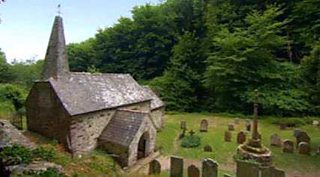
It is thought to be the smallest church in England seating 30 people and serving a parish which has a population of nine people.
Before Christianity, Culbone was a centre for pagan worship, and some claim that Joseph of Arimathea passed this way on his journey from Looe to Glastonbury.
A community of monks was established in Culbone in the 5th Century, and the first church was built on the site about 200 years later.
Parts of the current church, St Beuno's, are thought to date back to Saxon times, although over the centuries it has been rebuilt and remodelled.
3. Clovelly village – Locked in time
Clovelly is renowned for being one of Devon’s prettiest villages with cobbled streets, whitewashed cottages and picturesque harbour which have changed little since the 1800s.

The village was once a bustling fishing port but today its main industry is tourism - and it’s an interesting diversion on the South West Coastal Path.
There are no cars and no public transport, and the path to the top of the village zigzags upwards with steep bends at every turn.
Donkeys have been used as the main form of transport in Clovelly for centuries as they are perfectly adapted to coping with the village’s steep cobbled streets. The donkeys used to carry the heavy baskets of herring in special pack saddles up the narrow cobbled street from the harbour.
In 1840 Clovelly had 60-70 boats engaged in the herring fishery, but today that number has shrunk dramatically. Fishing continues on a limited basis with crabs and lobsters being the prize catch.
Clovelly was also a safe haven on the ‘the shipwreck coast’ and there are numerous tales of shipwrecks along its treacherous cliffs. Smuggling and piracy were once common along its coastline in the 19th Century.
Today’s visitors can get a sense of what life would have been like with a trip to this heritage village.
Clovelly's donkeys

3. Levant – Underground mine
The former Levant Tin Mine in Pendeen is home to the only working beam engine in the world still powered by steam.
There were once around 600 tin mines dotted along the Cornish coast. These tin mines inspired Winston Graham’s classic novel, Poldark.
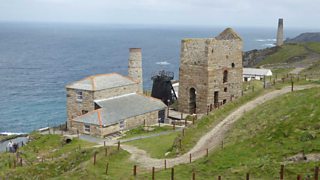
Mining was dangerous work and miners risked their lives on a daily basis. Thirty three men lost their lives in one of the worst disasters at Levant in 1919.
The accident started on the ‘man engines’ which involved men jumping off and on a ladder again and again, a very dangerous job.
The ladder broke, killing everyone working on it and crushing those working below. The disaster signalled the end of man engines and almost the end of Levant which ultimately stayed open for another 10 years.
Video - Go underground at Levant Mine

Underground at Levant Tin Mine
Go underground at Levant Tin Mine.
5. Cornwall – Birthplace of the tech revolution
It is hard to believe that remote Lizard Point is one of the most important locations in the history of the world’s telecommunications.
Perched high on the cliffs above Housel Bay, it is the oldest surviving wireless station in the world.
It was in this simple hut that the radio pioneer, Guglielmo Marconi conducted his pioneering wireless communications.

On 23 January 1901 Marconi received a record-breaking wireless communication from the Isle of Wight, covering 186 miles.
It proved that signals could travel well over the horizon, and laid the foundation of his later work at nearby Poldhu (below).
Today you can go inside the hut and experience the very room where Marconi worked.
Inside Marconi's Hut

Porthcurno – Hidden undersea cables
Porthcurno beach and village are a short scramble down the cliff side close to the South West Coastal Path.

The harbour holds one of the world’s best kept secrets for it was here that the telegraph was born as a means of mass communication.
In the pre-digital age, it could take six weeks to send a message to India from England.
In 1870 the Cable company laid down 2,000 miles of telegraph cable from Portcurno to Bombay in India. It was carried by the ship The Great Eastern, built by Brunel - this was an incredible feat because the cable had to be strong and was very heavy.
The first telegraph sent from the village took less than one minute to get a message to Bombay.
The telegraph company chose the harbour because the sands at Portcurno shifts too much to allow fishing. This meant that the cables would not be disturbed by boats coming in and out.
Over the next 100 years, a further 14 cables were laid from Portcurno to reach every corner of the globe. They all came into a cable hut on the beach which is now the only remaining cable hut in the world.
The cable office was moved underground during the Second World War when there were fears of attack. Cornish miners bored into the rock to create tunnels and a bunker. It was in one of these rooms that the British intercepted German messages and sent them to be decoded by intelligence services.
Porthcorno is still a hub for modern communication. Where telegraph cables once stretched out, modern fibre optic cables are now laid.
Porthcurno beach

6. Beer Quarry Caves – Underground discoveries
The chalk limestone cliffs of Beer Head are an impressive sight on the South West Coastal Path.
Chalk has been quarried at Beer Quarry Caves since Roman times. The Beer chalk was formed 120 million years ago and is an exceptionally fine and shell-like rock because there was a fast current flowing along the sea floor at that time which swept away any large fossils or plant remains.
The rocks at Beer Head were highly sought after by stone masons for their unique colour which radiates light and is soft enough to carve with intricate designs.
Its stone was used in the building of Exeter Cathedral, St Paul’s, the Tower of London, Hampton Court and parts of the Houses of Parliament.
Underground there is a vast man-made complex of underground caves which formed the original quarry covering 75 acres.
Quarrying ended in the 1920s, but the caves are now a museum and open to the public every day.
Beer Head

7. Hurlstone Point – Coastguard's look-out
The South West Coastal Path was created in the 19th Century not for recreational walkers but as a route for the coastguard to walk from lighthouse to lighthouse, patrolling for smugglers.
Some of the coastguard’s look-out huts are still standing and can be seen from the coastal path.
The coastguards were not like those today, they were revenue men whose job was to prevent smuggling if there was a shipwreck.

They needed to look down every bay and cove, which is why the coastal path hugs the coast so closely.
Hurlstone Point Hut was a great place for the excise men to look out to see what was moving up and down the coastline.
The path was also used by fishermen on the look-out for shoals of fish, the only way to find their catch before modern technology was introduced.
8. Bucks Mills – Secluded village
Bucks Mills is thought to date back to the days of the Spanish Armada when the survivors of a Spanish Galleon took refuge and settled here.
Local women married the survivors of the shipwreck and formed a tight-knit community, largely living in isolation.
There is still evidence of the families in the houses which carry the first names of the residents – Emma’s House, James’ House, George’s House, and so on.
One of the houses is a chalet which was the summer house of two artists, Judith Ackland and Mary Stella Edwards. It remains unchanged and frozen in time.
When Judith died in the 1970s, Mary locked it up and never returned. It became an untouched shrine to the deceased, complete with crockery, notebooks and clothes.
The artist J.W. Turner was also drawn to Bucks Mills drawing inspiration from its seascapes which he painted from the beach.
Modern visitors can explore its heritage atttractions.
Bucks Mills

9. Tyneham – Abandoned 'ghost' village
Tyneham is hidden in a beautiful valley in Dorset where time has stood still for over 60 years.
Today the South West Coastal Path runs along its edge but the hidden history of this forgotten ‘ghost village’ tells a remarkable story.
During World War Two, the villagers were told by the British government they had to move out of Tyneham to make way for D-Day preparations. They were given 28 days’ notice and all 102 houses were evacuated.
When the Second World War ended, there was no sign that the villagers would be allowed to return home.
As the Cold War started, Tyneham village and Lulworth firing ranges became crucial to the government’s defence plans and the valley was compulsorily purchased for £30,000 by the Ministry of Defence in 1952.
The villagers launched a campaign to claim back their village with the slogan ‘Tyneham Died for D-Day’. But they were never to return to their homes.
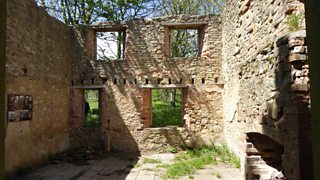
After decades of arguments, the MoD agreed to provide limited access to the village at weekends in the 1990s.
The South West Coast Path passes through beautiful Worbarrow Bay close to the village where you’ll see the remains of abandoned cottages.
It is quite difficult to visit Tyneham because of live firing on Ministry of Defence land nearby. Most weekends visitors can walk into the village and take a self-guided tour of its ruined buildings and church. It is a chilling experience.
Worbarrow Bay

10. The Lizard – Wildlife haven

The Lizard is Britain’s most southerly point and it’s a hot bed of hidden wildlife from basking sharks and birds to rare and unusual plants.
One of its most famous residents is the chough, a bird which is one of the corvid or crow family.
Characterised by its bright red beak and feet, this rare bird is only found in a small number of coastal locations in Britain.
Listen out for its distinctive 'Ca-Caw' calling sound as you walk along the cliffs near the southerly tip of the peninsula near Housel Bay.
Bird watching at Lizard Point

Wildlife watching at Lizard Point
Paul Rose goes in search of wildlife and birds at Lizard Point including the rare Chough.
11. Minack Theatre – High drama
High above the granite cliffs as Porthcurno sits an impressive amphitheatre carved into the rocks.
Although it looks like an ancient Greek amphitheatre, the Minack Theatre was built in 1900 by Rowena Cade and her gardener. She wanted to create a place for her friends to perform Shakespeare’s The Tempest.
It was a mammoth task and it took her 50 years to create the theatre as it stands today.
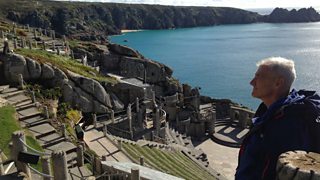
Although the theatre is built into the granite rocks, almost half of it is made from concrete, mixed with local beach sand. Rowena herself carried many tons of sand all the way up from Porthcurno beach to the theatre,
Today, the theatre is as popular as ever and hosts open air performances every summer. Theatre goers can enjoy the unusual experience of seeing pods of dolphins or seals swimming by.
Video: Explore the Minack Theatre

Minack Theatre - drama by the sea
Paul Rose visits the Minack Theatre in Cornwall.
12. Hidden Treasures - Burgh Island

Burgh Island on the south Devon coast is cut-off from the mainland by the tide which makes getting there tricky.
It became a favourite getaway for pre-war luminaries like the crime writer Agatha Christie. The big attraction for visitors was the Art Deco hotel where writers liked to work.
At low tide it is possible to walk along the causeway to the island but at high tide a sea tractor transports visitors over the sands.
From the Pilchard Inn there are far-reaching views from the top of the island.
An unusual way of seeing what the island has to offer is from under the water. One of the highlights of any trip is Mermaid’s Cove where snorkellers can see spider crabs, prawns and sea life in the cracks in the rocks.
About Coastal Path
Presenter and adventurer Paul Rose explores the South West Coast Path's history, wildlife, and traditions in the Βι¶ΉΤΌΕΔ Two series, Coastal Path.

On his way, he discovers adventures around every corner of the peninsular, and tries his hand at outdoor activities from hang gliding and sailing to pot holing.
Lizard Point in 360 Degrees
Preview: Coastal Path

Preview: Coastal Path
Paul Rose discovers the treasures of the South West Coast Path.
Galleries: Behind the Scenes
Hang gliding over the coast

Hang gliding over the coast
Paul Rose takes to the skies over the Devon coast for spectacular views.
Sheep farming on the cliff edge

Rounding-up sheep on a cliff edge
Meet sheep farmer David Kennard who works on a farm close to a dramatic cliff top near Mor


